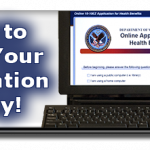
As part of Secretary of Veterans Affairs Eric K. Shinseki’s effort to streamline access to benefits, the Department of Veterans Affairs (VA) has removed the signature requirement for Veterans who electronically submit an online 10-10EZ “Application for Health Benefits.”
“This singular action will reduce days, if not weeks, for Veterans who apply online to access their hard-earned medical benefits and upholds the promise to reduce access barriers to needed care for this Nation’s Veterans,” said Shinseki.
Previously, Veterans filling out the online application were required to print a copy, sign it and send to their local medical center or wait for a copy to be mailed to them for signature and mailing before enrollment into the VA healthcare system could occur.
For additional information, go to www.va.gov/healtheligibility
or call VA’s toll free number at 1-877-222-VETS (8387). The online form is available at https://www.1010ez.med.va.gov/sec/vha/1010ez/.
SOURCE Department of Veterans Affairs
ATTENTION READERS
We See The World From All Sides and Want YOU To Be Fully InformedIn fact, intentional disinformation is a disgraceful scourge in media today. So to assuage any possible errant incorrect information posted herein, we strongly encourage you to seek corroboration from other non-VT sources before forming an educated opinion.
About VT - Policies & Disclosures - Comment Policy



